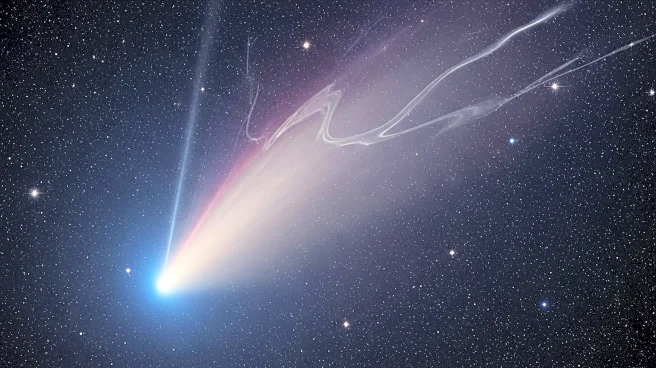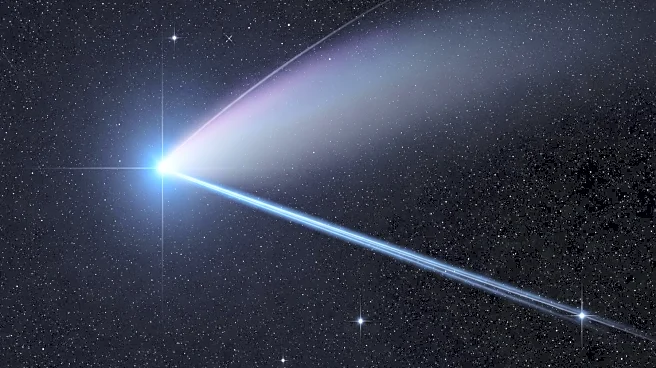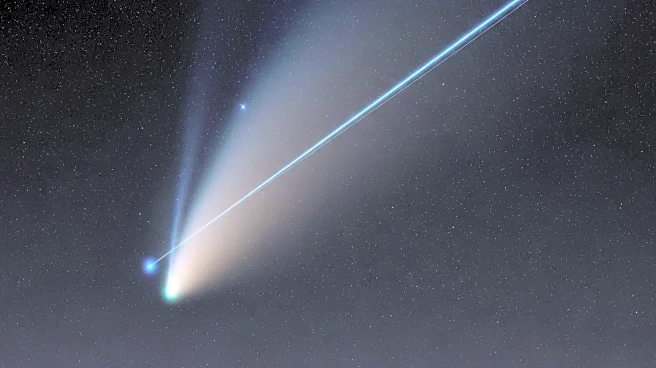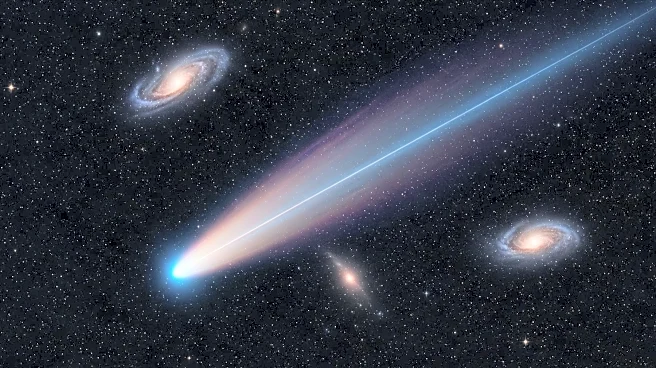What's Happening?
A newly discovered comet, named Comet Lemmon, is rapidly brightening and will soon be visible to the naked eye as it approaches its closest point to Earth. The comet, which was discovered in January 2025,
is on a 1,350-year journey and will reach its closest proximity to the Sun on November 8. According to EarthSky, Comet Lemmon will be closest to Earth on October 21, and it is expected to reach its brightest point around October 31 or November 1. Recent observations have shown the Sun's solar wind affecting the comet's tail, creating a spectacular visual display. This astronomical event coincides with the arrival of the full Super Hunter’s Moon on November 5, which will be the closest supermoon of the year.
Why It's Important?
The visibility of Comet Lemmon presents a unique opportunity for both amateur and professional astronomers to observe a celestial event that occurs once every 1,350 years. This event is significant for the scientific community as it provides a chance to study the effects of solar wind on comet tails and gather data on cometary behavior. For the general public, the comet's visibility offers a rare chance to witness a natural phenomenon without the need for telescopic equipment. The timing of the comet's approach, alongside the Super Hunter’s Moon, adds to the excitement for sky watchers and could increase public interest in astronomy.
What's Next?
As Comet Lemmon continues its approach, astronomers and enthusiasts will be closely monitoring its brightness and trajectory. Observatories and space agencies may release more detailed observations and images as the comet nears its closest point to Earth. Public interest is likely to grow, with educational institutions and astronomy clubs potentially organizing viewing events. The comet's visibility could also inspire discussions on the importance of space exploration and the need for continued investment in astronomical research.
Beyond the Headlines
The appearance of Comet Lemmon highlights the ongoing advancements in astronomical technology and the ability to discover and track celestial objects. It underscores the importance of international collaboration in space research, as data from various observatories contribute to a comprehensive understanding of such phenomena. Additionally, the event may spark interest in the cultural and historical significance of comets, which have been observed and recorded by civilizations throughout history.











